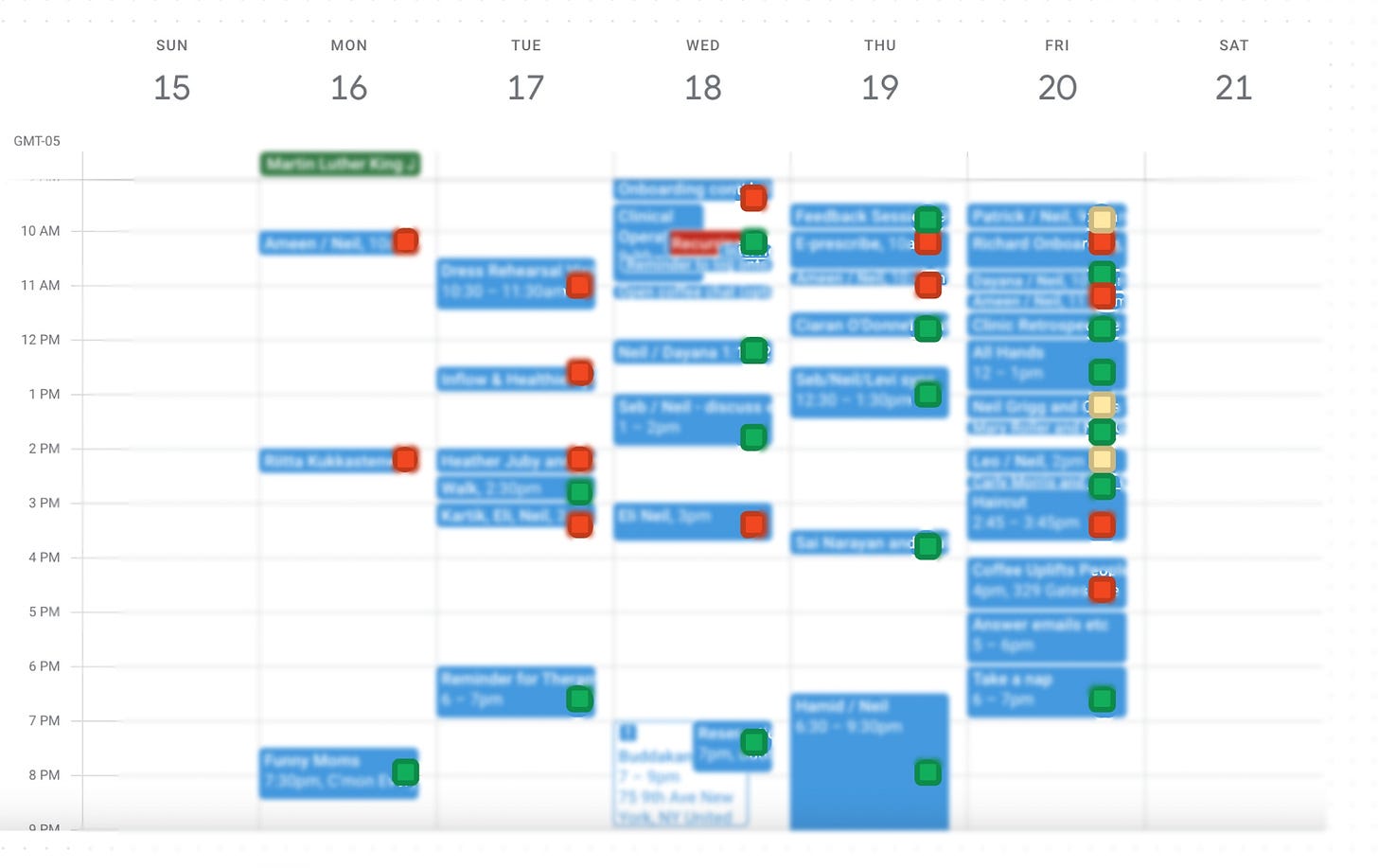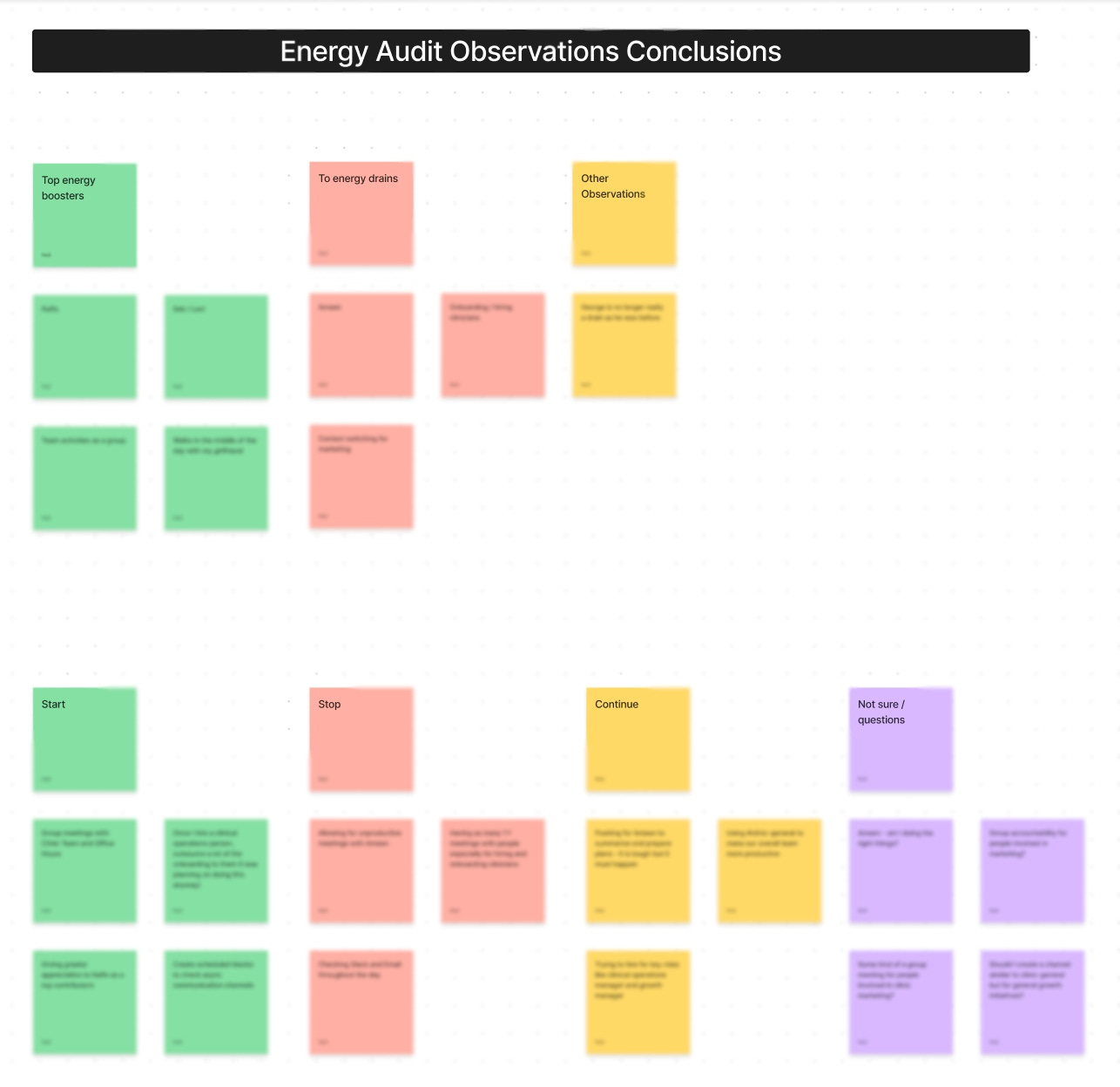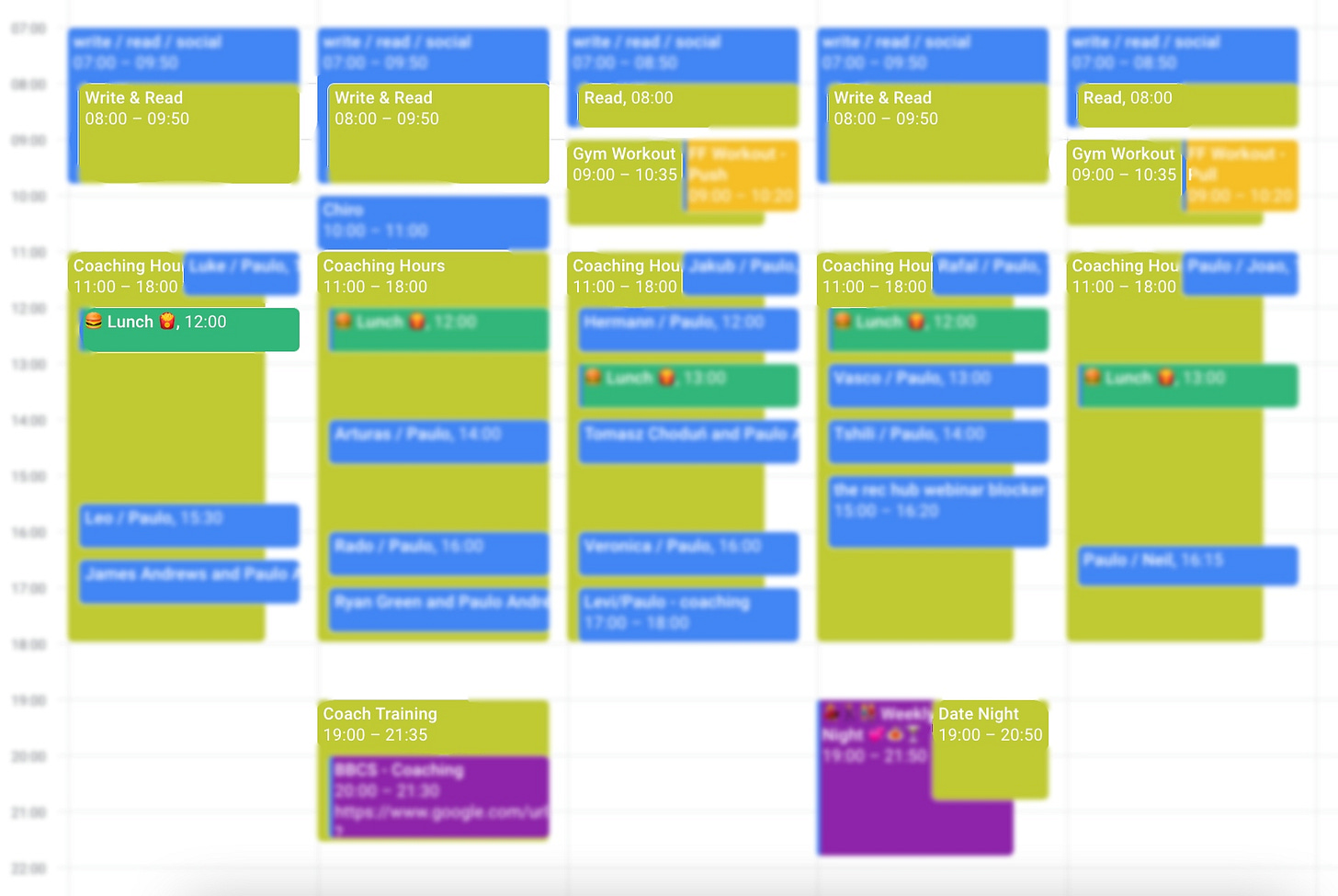I’m wondering… throughout my entire engineering management career, what percentage of the time did I spend in a state of overwhelm? It wasn’t the majority of it. But it certainly wasn’t insignificant either.
Suffice it to say that I know the feeling, and I know it well. Today, many of the coaching sessions I hold with my clients remind me of it. They’re overwhelmed, too.
For me it was this slow, anxious, insidious, and steady decline into some form of burnout. In hindsight, I recognize that a big part of it was getting my personal identity tied up in my work. When you allow your sense of self-worth to be dictated by outcomes, you’re setting yourself up to fail. The reason is simple: no matter how much effort you put into it, those outcomes depend largely on factors (and, critically, people) outside of your control.
Simple, but elusive. Easy to forget when you’re in stuck in the rat race, lacking the necessary oxygen to think clearly about your predicament.
It’s no wonder we get into this. Some of us have a savior complex, others have a tendency to be people pleasers but, regardless of the specific variety, it is usually rooted in both a desire to help and a need to be liked. Sadly, when that keeps taking precedence above all else, you end up putting yourself last. No bueno.
I didn’t know better then, and I was doing the best I could with what I had. Thanks to those experiences, I know a little better now and I want to pass on some of those insights to you, just like I do for the leaders I coach. So you too can have a better time.
While part of it needs to be a mindset shift (a topic for a future post), another very significant part is quite tactical. It hinges on creating the necessary self-awareness that is a precursor to successful change—and taking decisive action.
You must ask yourself the right questions, and then invest the time in pursuing the answers that are right for you.
What Are My Goals?
Once upon a time, a good friend of mine asked me a great question:
What is your framework for saying no?
If you don’t know what you’re going for, how can you possibly decide how to best spend your time? And more importantly, how to not spend your time?
Again, simple but not easy. If setting useful goals was easy, everybody would do it. The reality is less glamorous. In fact, in my experience this is why the OKR process usually fails in most companies. It’s not the framework itself but that setting good goals is hard work and non-obvious.
That investment, however, absolutely pays off. With that clarity, you empower yourself to streamline the many daily decisions you make on how to spend your time. Without it, you’re left flailing in the wind.
As an example, this year I decided to challenge myself: what would it take to actually stick to new year resolutions throughout the whole year? How can I prove the popular belief to be wrong?
There’s multiple side to this, but the bedrock is clear goals for myself that are aligned with who I want to become. I defined 3 personal OKRs for the year:
Objective 1: Be in the best shape of my life.
Objective 2: Get out of my comfort zone.
Objective 3: Build a thriving solo business.
Each of these has a handful of key results that I track on a monthly basis. By being crystal clear on what success looks like this year, I make it much easier for me when deciding whether to take or pass on an opportunity. It also enables me to look back at my calendar and to see how much of my waking hours I’ve spent directly contributing to my goals.
Similarly, as an engineering manager, it is essential that you keep these as clear as possible at all times:
Why does my team exist? What are its near-term goals?
What are my goals for the next couple of months, and how do they connect to the team and company?
How do I break those down to this week? What are my absolute priorities?
What Has My Attention?
How often do you pay attention to what has your attention?
And if you don’t, do you ever wonder?
If you’re overwhelmed, one thing you know for a fact is that some change is necessary, even if it feels daunting to do so. And change always requires awareness first.
One of my favorite tools to help my clients see (often for the first time) where their attention is being deployed is to do an Energy Audit, something I learned from Matt Mochary. As the name implies, it not only tracks how you spend your time, but more importantly how you spend your energy.
The exercise is simple. Go through the last 2-3 (representative) weeks of your calendar, and highlight each event in either green or red, depending on whether that activity gave you (green) or drained energy from you.
This serves two purposes:
Spend ~80% of your time in the green. What percentage of the time is energy-draining (red)? Of that, what can you stop doing altogether? What can you delegate? And from what’s left, how can you change it to be more energy-giving?
Spend at least 80% of your time clearly aligned with your goals. What percentage of your time is it directly impacting your goals? Be honest with yourself.
Invariably, this creates multiple “aha!” moments for my clients. The insights it brings are often triggers for small shifts that ultimately bring them spaciousness and breathing room. And the beautiful thing is that it’s not necessarily about working less, but about working better—in a way that gives you energy rather than drains it.
What Should Have My Attention?
Armed with the insight from the previous exercise, you can then ask yourself about the gap between where your attention is going versus where it should be going.
One thing that often eludes engineering leaders, especially less mature ones, is the concept of leverage. For busy managers, that is infinitely more powerful than focusing on productivity, which usually degenerates into obsessing about being “more efficient” or simply “doing more”. Leverage instead takes into account how much of a multiplier you become.
Leverage is usually found in the “important but not urgent.” However, in the frenetic startups world, it can be awfully difficult to:
Not be swamped in the urgent.
Not see almost everything as important.
The result is the “reactive whiplash”, and rarely (if ever) spending time on that what is important, but not urgent. All short-term, no long-term.
Once again, part of the answer is in creating clarity.
Most leaders have probably come across the famous Eisenhower Matrix at some point. But not many know of executive coach Don Neufeld’s modified version, which helps create a clearer sense of what’s really important, and gets you unstuck. I suggest you dive into Don’s post, and try it out for yourself.
Once you feel you have a better understanding on what you should be spending your time on, turn to the next and final question.
What Does My Ideal Week Look like?
The Eisenhower Matrix tells us that the “important/not urgent” should be scheduled. In fact, I’d go further: everything should be scheduled.
Spending your time with intent means getting to a point where you know exactly what your ideal week looks like—which is completely in your control to define.
Critically, this sets your mind in a forward-looking, reward-oriented mode. You are literally envisioning what you want, predisposing your brain to seek it. Quite different from the rather threat-inducing mode of constantly reacting to whatever is thrown your way.
If you got some decent answers to the above questions, you’re in a great place to design that perfect week. It both gives you something to shoot for, and something to reflect on:
Start each day with a clear intention on what to stick to.
End the week with something you can review against.
Each week, I suggest creating your ideal week ahead in a separate private calendar.
Throughout the week, you do the best you can to stick to your design but things will happen. At the end of the week, you can see where you ended up and reflect on it:
To what extent did my actual week match my ideal week?
For what did not match, why was that? What insight can I get from it?
What would it take for me to increase the matching next week?
Remember that, as I always say, it’s not about where you start but how you improve that matters. Creating this habit wins marathons, even if sometimes you’ll lose a sprint or two.
Whatever You Do… Focus!
You know what? The sad reality is that no matter how good your process is, or how proficient you are at saying no to what doesn’t create value, it’s all useless if you’re not present, mindful and focused on whatever you happen to be doing.
So, as Rands recently wrote,
“Focus, the pure focus on the task in front of you, is when you do your best work. The important achievements of information management are essential but immeasurable. When you focus, intensely focus, you can see the one thing that must be said, to discover the critical assumption that transforms good design to great and to most efficiently transform your years of experience into small, understandable, and unintentional lessons for those sitting right there… focusing with you.”
Wise words. Take this away from this week’s issue, if nothing else.
TL;DR
Avoid overwhelm requires bringing about the necessary awareness of what’s currently leading to what you don’t want; and to become intentional with how you spend your time and energy.
Clarify what goals, and how they align with your team and company, so you have a framework to help you decide how to not spend your time.
Use the Energy Audit to create visibility on where your time, attention and energy are going.
Given your goals, focus on leverage instead of productivity. Use the modified Eisenhower Matrix to define what’s truly important and a multiplier of your input.
With all of the above, design your ideal week and overlay each actual week on top of it. Push yourself to reduce the gap, and use the two as a means to reflect and improve weekly.
Whatever you do, FOCUS on that thing and that thing only!









Really appreciated this, came right on time for my current situation too 😁 Found this through Refind, subscribing now